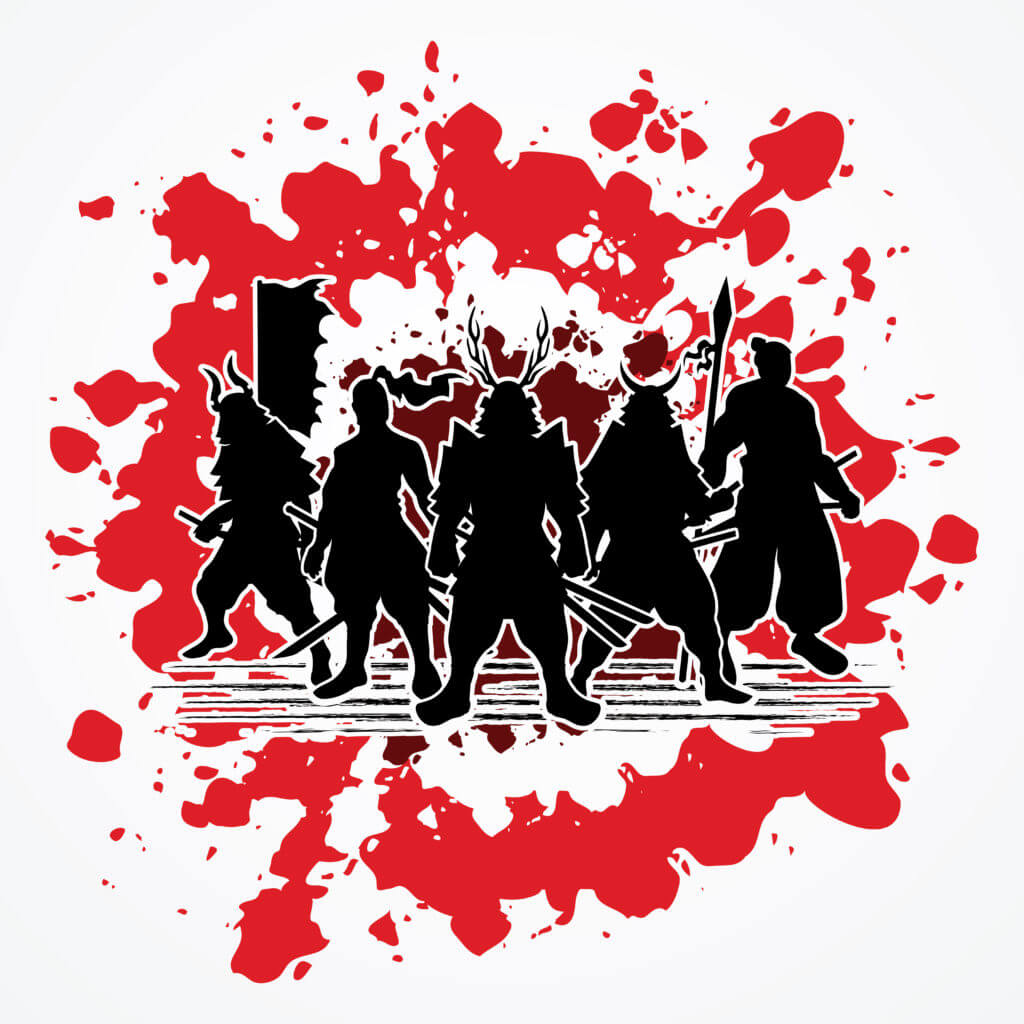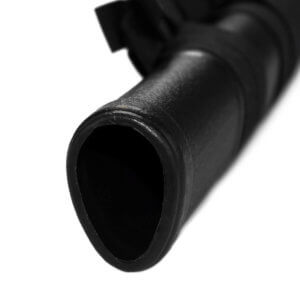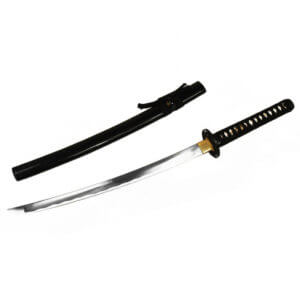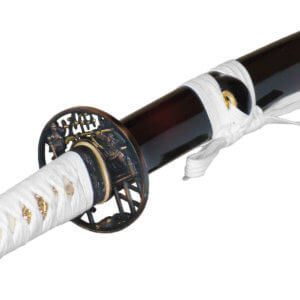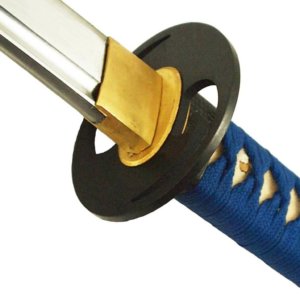In addition to the impressive historical development of the samurai sword There have been many outstanding and famous samurai fighters throughout Japanese history. However, only some of them were able to achieve a special fame due to their special skills and fighting styles, which still endures today. Legends surround their work and deeds, which will probably never be forgotten. We have compiled our top 10 of the most famous samurai for you.
For all those for whom the following text is too long, here is our YouTube video on the subject:
Place 10: Shimazu Yoshihisa
Shimazu Yoshihisa is considered one of the most famous warriors of the Sengoku period. For a short time he was married to his own aunt. His declared goal was to unite Kyushu, and he was able to achieve some success in this endeavour. His clan ruled large parts of Kyushu, but was eventually defeated by Toyotomi Hideyoshi. According to legend, Shimazu Yoshihisa retired after this defeat and became a Buddhist monk.
9th place: Date Masamune
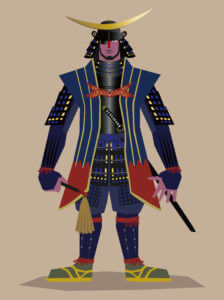
Date Masamune was one of the most feared warriors of his time due to his penchant for violence and lack of mercy. In his childhood, he completely lost his sight due to a smallpox infection in his right eye. But this only made him tougher and fight for prestige as a warrior.
In the course of his career as a samurai, he built up the image of an incredibly efficient fighter. One day, when his father was kidnapped by members of an enemy clan, he went to war and killed all the enemies, including his father. He later served Toyotomi Hideyoshi and Tokugawa Ieyasu as leader of the Date clan.
8th place: Uesugi Kenshin
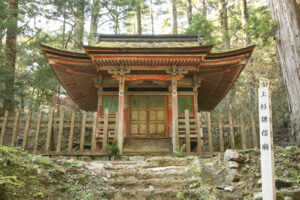
Uesugi Kenshin was a bold warrior, leader of the Nagao clan, daimyō of the Sengoku period and known as the "Dragon of Echigo". He achieved fame primarily through his rivalry with Takeda Shingen and as the incarnation of the Shintō Buddhist goddess of war Bishamonten.
Takeda Shingen and Uesugi Kenshin fought each other in countless battles, including one-on-one battles. Nevertheless, the two were united by a feeling of mutual respect. Both warriors occasionally used European firearms in their battles, although they did not use them due to the Bushidō rejected. Many mysterious stories surround his death to this day.
7th place: Tokugawa Ieyasu
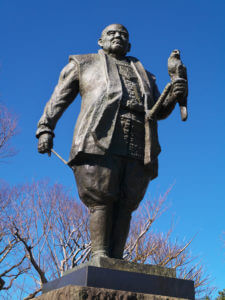
Tokugawa Ieyasu was originally an ally of Oda Nobunaga and his successor Toyotomi Hideyoshi. He was more of a thinker than a warrior. After the death of Hideyoshi, he gathered all the opponents of the Toyotomi clan and fought against him.
He finally defeated the clans at the Battle of Sekigahara in 1600 and became the first Tokugawa shogun in 1603. The Tokugawa shogunate ushered in a new era in Japan and lasted until 1868. The lost sword Honjo Masamune was seen as a symbol of his power.
6th place: Takeda Shingen
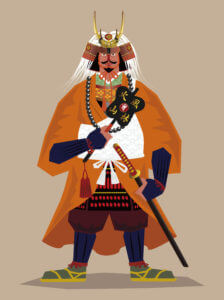
Known as the "Tiger of Kai", Takeda Shingen was a feared warrior but also a respected poet.
He is considered a great strategist and military genius. He fought in numerous battles. This included the 4th Battle of Kawanakajima, in which he faced his rival Uesugi Kenshin in single combat. He was one of the few warriors to successfully stand in the way of Oda Nobunaga and stop him. His politics as a daimyo had a decisive influence on the shogun Tokugawa Ieyasu.
In the Takeda Shrine in Kōfu, Japan, Takeda Shingen is still worshipped today as a Buddhist Shintō deity.
He died under mysterious circumstances in 1573, whereupon Oda Nobunga was able to seize power.
5th place: Honda Tadakatsu
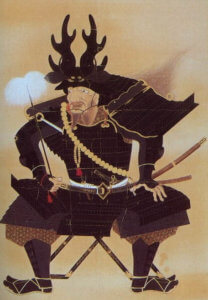
Honda Tatakatsu became known as "the warrior who surpassed death itself", as he never received a single wound during his entire career as a ruler and warrior on the battlefield. He fought over 100 battles, all of which he won.
His main weapon was a spear that became known as the "dragonfly cutter" and made every opponent's face sweat with fear. Among other battles, he fought in the Battle of Sekigahara, which ushered in a new era in Japan.
4th place: Hattori Hanzo
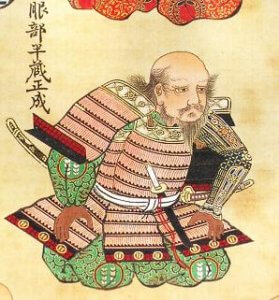
Hattori Hanzo lived from 1541 to 1596 and is considered one of Japan's most famous samurai and ninja.
He was a loyal servant of Tokugawa Ieyasu and inspired many fictional characters, such as the swordsmith Hattori Hanzo from the film Kill Bill. Find out more about him in our Hattori Hanzo contribution.
3rd place: Toyotomi Hideyoshi
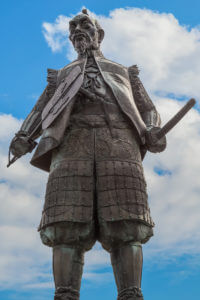
Toyotomi Hideyoshi was the successor to Oda Nobunaga and also a powerful ruler and warrior. Although he was born into a peasant family, his skills on and off the battlefield enabled him to steadily gain power.
He commissioned the construction of the massive Osaka Castle and led battles for China and Korea.
From 1581 until his death in 1598, he ruled most of Japan. However, he was denied the title of shogun during his lifetime. He was the first ruler of Japan to hold the legendary Honjo Masamune was.
2nd place: Oda Nobunaga
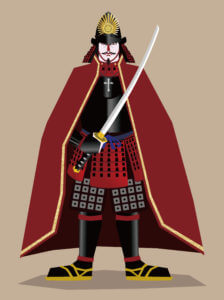
Oda Nobunaga is considered one of the most respected warriors and charismatic leaders in Japanese history.
In 1560, he killed Yoshimoto Imagawa, who was trying to take the city of Kyoto, and laid the foundation for the unification of Japan. He was also the first to introduce firearms for fighting in battles.
His death came about when his own general, Akechi Mitsuhide, betrayed him and set a fire in the temple where Oda Nobunga was staying. The latter noticed the fire and realised that there was no escape, so he committed suicide, considering it a more honourable death.
1st place: Musashi Miyamoto
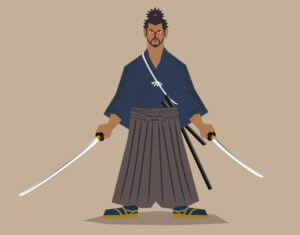
Musashi Miyamoto is generally regarded as the "perfect samurai", which refers to his will to fight and his swordsmanship. He had his first swordfighting duel at the tender age of 13.
His lifestyle is considered rather controversial. He is the epitome of a masterless samurai, better known as a ronin.
He is the founder of the Niten-Ichiryū sword fighting school, which uses the katana as a long sword and the wakizashi as a short sword. He is also the author of the book Gorin no Sho ("The Book of Five Rings"), which he wrote shortly before his death and which is still used today in the context of sword fighting as well as in management theory.

